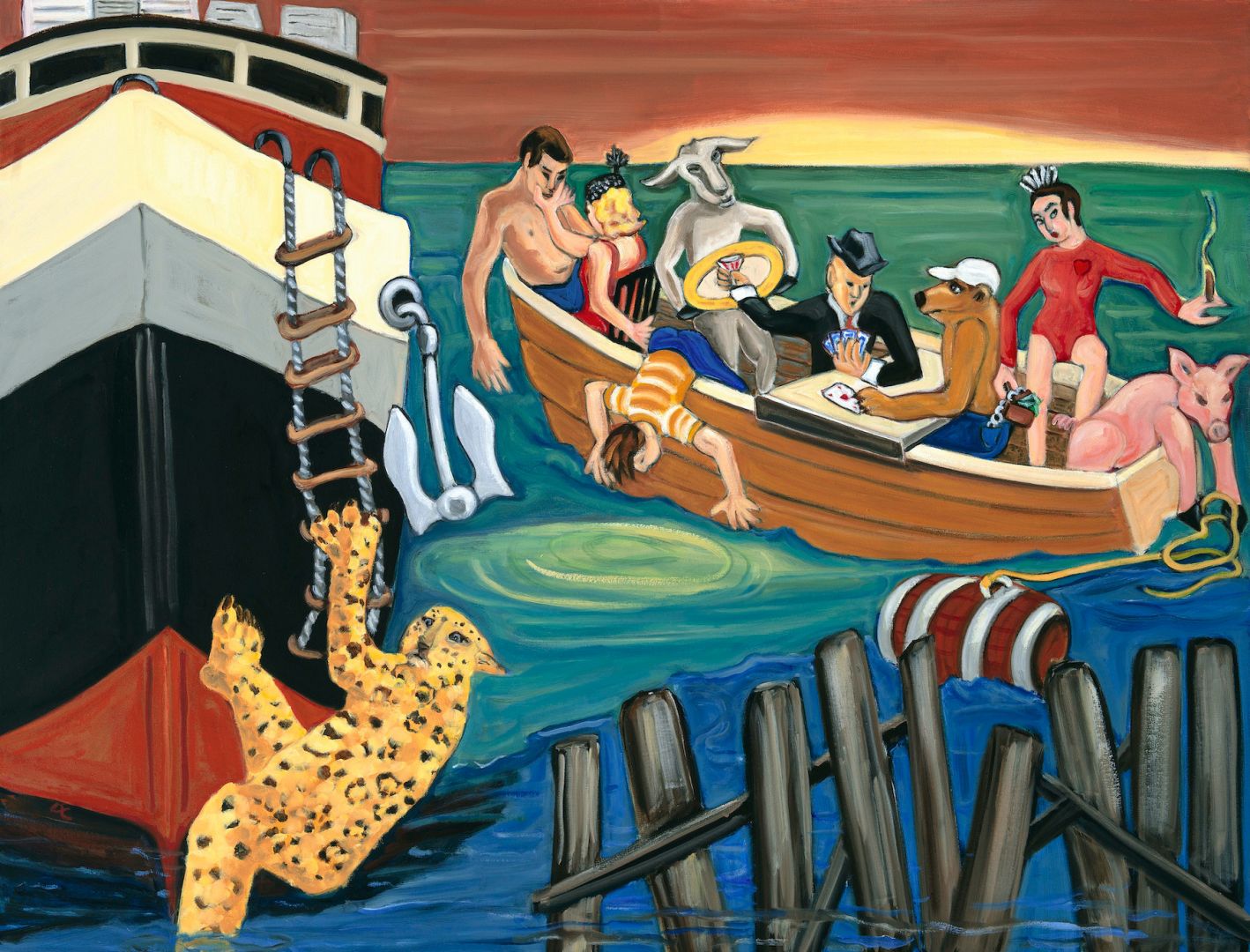Meet Diana Creighton | Artist & Painter

We had the good fortune of connecting with Diana Creighton and we’ve shared our conversation below.
Hi Diana, do you have a favorite quote or affirmation?
Here’s a paraphrase of a quote from the writer Gabriel Garcia Marquez: “Each of us has three lives, a public life, a private life and a secret life”. I like it because it describes the artistic levels of any narrative, and I’m a narrative painter. I also like Picasso’s great quote: Inspiration does exist, but it must find you working.


Can you open up a bit about your work and career? We’re big fans and we’d love for our community to learn more about your work.
I’m a narrative artist who uses paint and canvas to tell stories and to make the ordinary beautiful. I grew up in LA, where telling stories is a big industry. I took a degree in literature before I turned to art, so I look at painting as a way to tell stories, to comment on everyday experience. Because I didn’t come up through the usual MFA program, I had to discover a direction on my own. I took the painting curriculum at ASU to get the technical instruction I needed. Then I got a studio and started painting. I looked to art history for direction and followed the careers of artists who interested me. And I experimented a lot. You cannot find your “voice” as a painter and really understand your direction unless you take risks, working on your own, experimenting, breaking rules and testing limits. I was raising a family and helping run a business, so I had lots of obligations. But I also was left alone to try things out. That freed me to take risks. Very quickly I realized I was a figurative painter. I tried non-objective work, but always an image showed up. I began to self-assign —first I painted swimming pools in as many different media and surfaces as I could think of. Then I moved on to painting animals, toys and powerful women. I did pen and ink cartoons, big oil paintings, small outtakes — all kinds of images with lots of interaction among the characters. There was trouble and mayhem in those paintings, which I thought was funny and reflected life in general. I moved from Phoenix to southern Arizona, added a jaguar as a main character, and finally finished the series. You have to know when a story ends. In 2018 I was on the road a lot and got interested in highways and crossings. I began to notice ICE checkpoints as we passed through them and the busyness of the border crossings with Mexico. I thought why not tell the story of the everyday border — no politics, no point of view, just a record of the humanity and activity of crossings. I have worked on the series throughout 2020 and see that I’ll be engaged with it for a long time to come. It’s exciting and challenging. That’s what painting is all about.


Any places to eat or things to do that you can share with our readers? If they have a friend visiting town, what are some spots they could take them to?
I’d split my time between Phoenix and Tucson. In Phoenix, I’d visit PAM, SMOCA, the Heard and galleries: Lisa Sette, Bentley, Art Intersection, Gebert Contemporary. There are lots more, but that’s a start. As for food — Tarbell’s, Christoper’s Bistro and the Barrio Cafe. Again, just a start. In Tucson, I’d visit TMA, the Center for Photography and the Poetry Center on the UA campus and I’d drive 10 miles down I-19 to visit San Xavier del Bac — on the Tohono O’Odham Reservation. That’s an historic mission church from the 17th century full of original carvings and murals. As for food — Tavolino, El Guero Canelo for a Sonoran hot dog and Penca downtown.

Who else deserves some credit and recognition?
I have always been helped and supported by my husband, Ned, who championed all my work and encouraged me to take time to paint. We were in a publishing business together, we were raising our children, life was busy, but he knew I wanted to paint. He encouraged me to take time to study painting at ASU, to get an off-site studio and, early on, he helped me build canvases and move paintings around — all the schlepp work artists have to do. At ASU, Henry Schoebel and Robert Cocke were inspirational. I was given a good piece of advice when I thought I might want to apply for graduate school — “Get a studio, go paint.” That directed me to start experimenting and to find a voice. It was risky, kind of scary; but it was great advice. Along the way, I met lots of wonderful artists. I’ve always liked having a personal critique group, especially when I’m stuck on moving ahead with a painting. Artists who are farther along in their careers are a great example of how to conduct your own practice. Several years ago, I joined the Artist Breakfast Club in Phoenix and have found the subjects and talks presented at various meetings invaluable.
Website: www.dianacreightonart.com
Instagram: www.instagram.com/dianacreightonstudio
Facebook: https://www.facebook.com/dianacreighton
